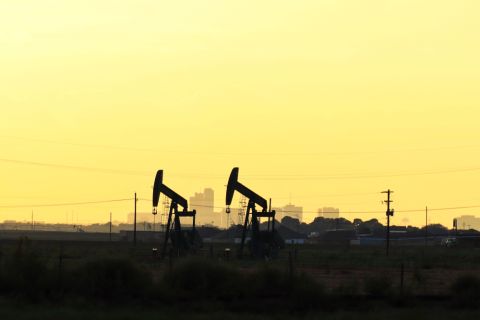The road toward the highly controversial Eastern Gulf of Mexico Lease Sale 181 has been a long one. During the last two years, the government has released a string of proposals regarding the parameters of the auction, with each proposal followed by the requisite public comment period. Though there are a few more steps that must be taken before the proposed sale date, December 5, the industry is getting an increasingly clear view of who is for and against this sale, and what stipulations may be necessary to appease the naysayers. Sale 181 will be the first opportunity in more than a decade for oil companies to acquire new leases in the eastern Gulf, and it may be their last opportunity to do so for yet another decade. Ten lease sales have been held in the eastern Gulf planning area, the last of which was in 1988. In 1998, President Clinton withdrew virtually all acreage in the planning area from further leasing until June 2012. The one exception was the area to be offered in Sale 181, which was already in the works prior to Clinton's decree. The sale will offer 1,033 blocks over 5.9 million acres, in 108 feet to almost 11,000 feet of water. It's been estimated that the area could yield as much as 1.9 billion barrels of oil and 7.8 trillion cubic feet of gas. Target depths and ages-Pliocene to Miocene zones from 12,000 to 25,000 feet deep-in the sale area are similar to what has proved so prospective in other blocks immediately west. "If allowed to occur, this will be a very exciting and competitive sale. Majors and independents are armed with the latest technology. Benefiting from the highest product prices in years...they will come to the table prepared to expose significant bonus dollars," says Tony Carvalho, a Plano, Texas, geologist. Formerly with Oryx Energy, today he is a consulting geologist for Ammonite Resources of New Canaan, Connecticut. Floridians' concerns However, some of these enticing blocks are offshore Florida, whose state government is lobbying hard for Sale 181 to be canceled. Though the area is more than 100 miles off Florida's coast, a portion of it is just off the Alabama coast. Florida state officials fear drilling so near its shore could affect the environmental resources of the entire region, and that currents could wash spilled oil or other substances from deepwater wells onto the tourist-lined beaches. According to the MMS' draft environmental impact statement (EIS), Alabama would be the state most likely affected by an oil spill in the Sale 181 area, because of the Gulf waters' east-west current along the western Florida coast. No other area has a greater than 25% probability of oil contact, which is considered a moderate risk by the MMS. In the event of an oil spill, the odds are one in 10 that the oil would reach the western panhandle of Florida within three days. "There is strong support among the state's citizens and within the Florida congressional delegation for no new leasing in the eastern Gulf, a position that has been upheld through the years by administrative deferrals, congressional actions and presidential moratoria," Florida Governor Jeb Bush wrote to the U.S. Department of the Interior, whose U.S. Minerals Management Service (MMS) is hosting the sale. "Few other issues so completely unite Floridians." Of course, the oil industry is united in its desire to lease virgin acreage over such a prospective area, especially because of the breakthroughs in seismic data and deepwater production systems since the last area sale occurred in 1988. The Independent Petroleum Association of America (IPAA) Offshore Committee has formed a task force to educate the public, especially in Florida, about the importance of the reserves contained in the eastern Gulf and to combat the negative stereotypes about offshore oil and gas development. "The concerns they have in Florida are probably due to an absence of information, and we're going to try to provide that," says Jack Ekstrom, director of government affairs for Forest Oil , Denver, who is working on the task force. "I'm not sure we've done a great job informing them of what development would mean...in the way of energy supply for them." Florida was the main source of negative feedback during the official comment period that followed the release of the draft EIS regarding Sale 181. Outside Florida, the comments were overwhelmingly positive. Of the 284 e-mails sent to the MMS, 280 support Sale 181, according to the agency. Out of 174 letters, 125 favor the sale. Public hearings were held at four sites along the Gulf Coast. In New Orleans, 11 people spoke, all in favor, according to the MMS. In Pensacola, 32 spoke-16 for and 16 against. In Tallahassee, 11 spoke, with one opposing the sale. In Mobile, nine spoke, all in favor. The final EIS should be published by July, says MMS spokeswoman Caryl Fagot. The MMS will then decide whether to hold the sale, and under what restrictions. If it will be held, a notice will be released, triggering another 60-day comment period. The final notice will be published at least 30 days before the auction date. The military's concern There are a number of possible endings to this saga. First, all 1,033 unleased blocks in the sale area could be auctioned in December as scheduled. Or, the sale could be cancelled. Or, some of it may be auctioned, as there is another concerned party with ties to the eastern Gulf-the U.S. Department of Defense. Currently, the department uses the eastern Gulf for aircraft and armament testing, and would like to eventually use some of the proposed Sale 181 area for training F-22 fighter pilots and testing missile-defense systems. Assuming the test missiles intercept their intended targets, debris the size of Volkswagens would pelt the surface of the water like a hailstorm. And the F-22s would produce supersonic blast waves in the area. These proposed testing areas currently skim the eastern edge of the Sale 181 area. Because of these potentially dangerous conflicts, the departments of Interior and Defense have drafted an alternate version of the Sale 181 area that cuts out the 126 easternmost blocks and adds four stipulations to the approximately 900 that remain. In the two rows of blocks west of 86˚-41' W. longitude, no activity could take place on the seabed or in the water column above the lease. All exploration, development and production activities would have to take place from outside the lease through directional drilling or other techniques. In the three rows of blocks west of 86˚-47' W. longitude, no permanent structures could be installed that extend above the surface of the water. Temporary structures such as survey ships, drilling rigs and supply vessels would be allowed if they could evacuate the area within 14 days. Production systems located on the seafloor or deeper than 100 feet below the surface of the water would be allowed. Exploratory drilling windows would be applied to the five rows of blocks west of 86˚-41'W. longitude. Oil companies would have to drill their exploratory wells within a designated six-month time frame, followed by a six-month suspension of operations. Initially, December through May would be open to exploration, and June through November would be closed. On those same five rows of blocks, the United States would reserve the right to temporarily suspend oil and gas operations at any time in the interest of national security. Chris Oynes, MMS director for the Gulf of Mexico region, says the windows program was created about 14 years ago, and a handful of eastern Gulf wells have been drilled this way without a problem. However, if a flood of operators begin leasing acreage here, "there is the potential for mammoth coordination problems," he said at an industry conference about the sale. Ekstrom says the IPAA task force, which is being chaired by Forest Oil chairman and chief executive officer Bob Boswell, has not yet formed an official opinion on the potential for military restrictions, but acknowledges that a restricted sale is better than no sale at all.
Recommended Reading
Exxon Shale Exec Details Plans for Pioneer’s Acreage, 4-mile Laterals
2024-05-03 - Exxon Mobil plans to drill longer, more capital efficient wells in the Midland Basin after a major boost from the $60 billion Pioneer Natural Resources acquisition. Data shows that Exxon is a leading operator drilling 4-mile laterals in the Permian’s Delaware Basin.
Exxon Closes $60B Pioneer Deal, Reshaping Permian Basin
2024-05-03 - After facing regulatory scrutiny, Exxon Mobil closed a roughly $60 billion acquisition of Pioneer Natural Resources. The largest shale oil transaction ever signed will reshape the order of power in the vast Permian Basin oil field.
EIA: E&P Dealmaking Activity Soars to $234 Billion in ‘23
2024-03-19 - Oil and gas E&Ps spent a collective $234 billion on corporate M&A and asset acquisitions in 2023, the most in more than a decade, the U.S. Energy Information Administration reported.
Dallas Fed Energy Survey: Permian Basin Breakeven Costs Moving Up
2024-03-28 - Breakeven costs in America’s hottest oil play continue to rise, but crude producers are still making money, according to the first-quarter Dallas Fed Energy Survey. The situation is more dire for natural gas producers.
ConocoPhillips CEO Ryan Lance: Upstream M&A Wave ‘Not Done’ Yet
2024-03-19 - Dealmaking in the upstream oil and gas industry totaled $234 billion in 2023. The trend shows no signs of slowing, ConocoPhillips CEO Ryan Lance said at the CERAWeek by S&P Global conference.





